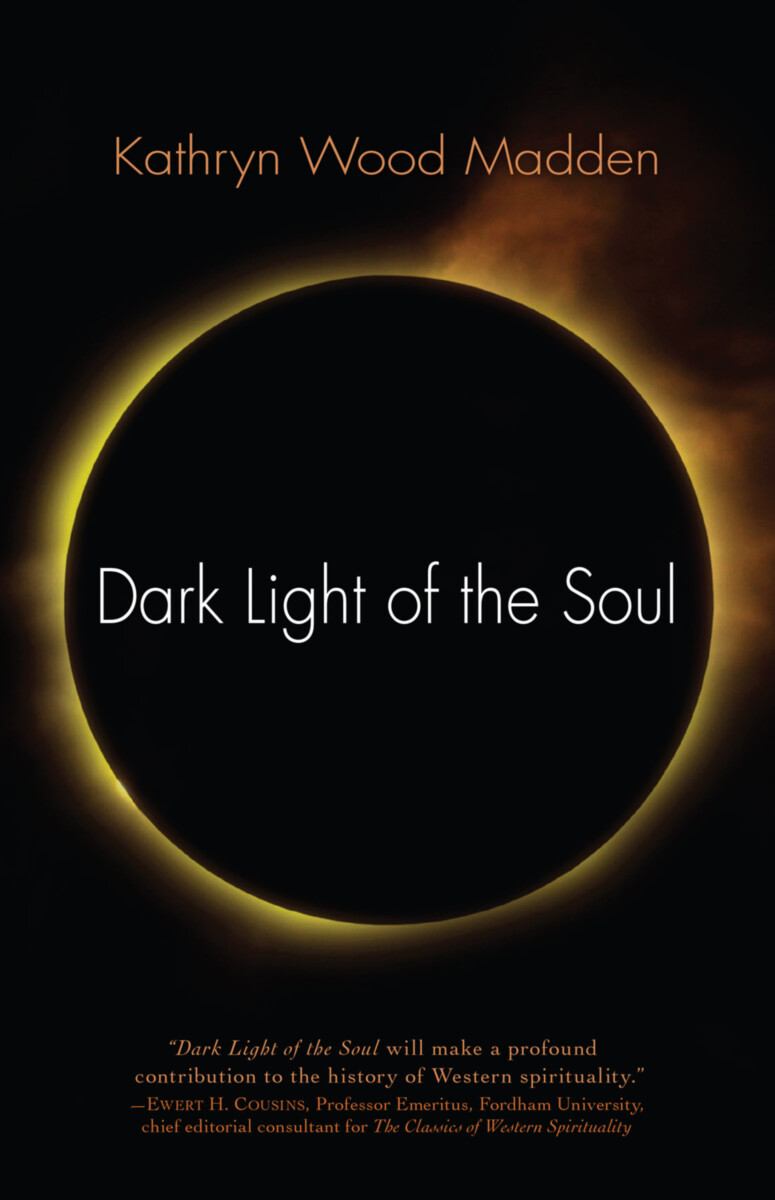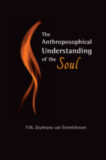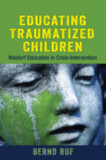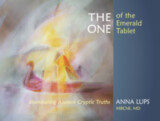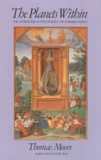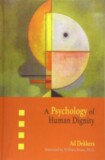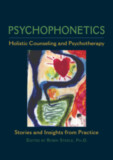Dark Light of the Soul
- Publisher
Lindisfarne Books - Published
3rd November 2008 - ISBN 9781584200659
- Language English
- Pages 272 pp.
- Size 5.5" x 8.5"
“In an age focused increasingly upon a cultural, political, and social understanding of otherness as diversity, preferring to ponder God, if at all, mostly in terms of immanence, depth psychology is in danger of becoming breadth psychology. The search for transcendence has become more and more the province of New Age weekend workshops. On the other hand, depth psychology that seeks only the transpersonal without the incarnate spirit in the flesh of everyday relationships in history may likewise prove to be a failed enterprise.... In this work, I compare and contrast Boehme’s and Jung’s experiences with a special focus on the religious or psychological experience of what Erich Neumann calls unitary reality, a ground of being that contains all opposites in potentiality” (from the book)
Dark Light of the Soul explores the inner journeys of Jacob Boehme, the seventeenth-century Protestant mystic, and C.G. Jung, the twentieth-century depth psychologist. Each was concerned with the immediacy of experience, yet comprehended the importance of spirit as a transforming presence in human life. Kathryn Wood Madden connects the experiences of these two pioneers, focusing on a “ground of being that contains all opposites in potentiality.” She examines those experiences from the perspective of depth psychology and religion, offering meaningful insights for anyone on a path of inner development, as well as for professionals in clinical settings.
Dark Light of the Soul will be of interest to all therapeutic clinicians and anyone who wishes a deeper understanding of and fresh paths into the human psyche.“Because so much tension exists in the world in the way each of us apprehends the divine, we sorely need a way of working with our psyches; this is imperative, in fact, to human existence and survival in the face of terrorism, fundamentalism, and archetypal evil. We need to locate and work within a psycho-spiritual umbrella that is large enough to house contradictions.” (from the book)
“One of many exciting qualities of Kathryn Madden’s new book is that it is daring, bold and innovative.... [S]he promotes a new field of study, depth theology. Its archetypal space is Abyss; its journey to it is through the underworld of psyche…The still center around which this conversation largely takes place is the images of ‘Other’ and ‘Otherness’ and the Abyss. Her work holds a particular fascination… in the possibility of a mystical psychology that engages both the poetic and the mythic impulses of psyche in and through embodiment.... Madden has a vision, a new way of apprehending psyche through the teachings of depth psychology and mystical experience that implicates as well the psyche’s poetic impulse.” —Dennis Patrick Slattery, Ph.D. Core Faculty Mythological Studies Program, Distinguished Professor in Depth Psychology at Pacifica Graduate Institute, author or co-editor of 13 books, including Depth Psychology: Meditations in the Field
“What makes Madden's views so pertinent is that she bridges the gap between psychology and spirituality. In writing of ‘transcendent ultimacy’ (which is not unlike Bion's ‘O’) versus ‘surface immediacy,’ she suggests that ‘our previous notions and images of God, the transcendent, the ultimate—whatever we call it—are shattered and redefined’ through our experience of unitary reality. Her description of different types of abyss and their effects, ranging from the terrifying to the ecstatic, is excellent and gives one a useful sense of what one could call the ‘intermittent bipolarity’ of the experience of unitary reality, as one of a pair of contained opposites enters consciousness. It is this reality, symbolized by the abyss, that ‘may help us to understand how our dealing with contrast and otherness from the inside view informs how we deal with otherness outside ... in the course of the individuation process.’” —Paul W Ashton, psychiatrist and Jungian analyst in private practice; author, From the Brink: Experiences from the Void from a Depth Psychological Perspective; editor, Evocations of Absence: Multidisciplinary Perspectives on Void States (Cited in Spring: A Journal of Archetype and Culture, vol. 81, 2009)
“Kathryn Madden’s long-awaited book, Dark Light of the Soul, is quite simply stunning! In it she gives us a vast map of the spiritual dimensions of the psyche, and of the painful terrain one must often traverse in order to achieve (or receive) unitive consciousness. Following Boehme, with Madden’s tutelage we are shown the terrain of unitary reality—a rare and wondrous trip.... The mystic or the Self in each of us can resonate with the experience of these seminal voyagers into the realm of unitive consciousness.
“She ends with detailed reviews of three of her own clinical cases, demonstrating how several years of psychotherapy using dreams and spontaneous imagery as primary foci of the treatment can result in amazing spiritual experiences and connection with the unitive dimension of the human psyche.... As the author says, ‘The analyst’s job is to be present to this reality and to be a sort of midwife to the birthing of the third thing that incarnates.’ Even if it were these cases alone, Dark Light of the Soul is well worth reading and pondering.... I found this rich book delightful. Madden’s work bears reflective reading and re-reading.” —Fredrica Halligan, Ph.D. is a clinical psychologist currently practicing psychospiritual therapy and consultation as Director of the MindBodySpirit Institute in Stamford, CT (Cited in Psychological Perspectives, 2010.
Reviewed in Psychological Perspectives: A Quarterly Journal of Jungian Thought Kathryn Madden’s long-awaited book, Dark Light of the Soul, is quite simply stunning! In it she gives us a vast map of the spiritual dimensions of the psyche, and of the painful terrain one must often traverse in order to achieve (or receive) unitive consciousness. Her in-depth studies of Carl Jung and Jacob Boehme invite the reader to understand the farther reaches of the mystic’s experience, a great gift for those who may have found these famous authors somewhat mystifying in themselves. Madden begins her book with a summary of her intent and the scope of this work. She writes:This book rests on the premise that a unitary reality underlies all... psychological experience. The experience of this unitary reality is the culmination of an encounter with the deepest layer of the collective unconscious, the psychoid, archetypal layer, in which we meet all forms of otherness. The otherness we meet at this depth of experience is so radically transforming that all that was formerly known to us and thought to be real from the ego’s point of view is surpassed. Drawing from Jacob Boehme’s and Carl Jung’s images of radical otherness, a new reality is born—the Self in Jung’s terms, Christ in Boehme’s terms—a unitary reality that enables us to see through our newly constellated reality to our former origins, to a pre-differentiated, universal ground. (Madden, 2008, p.1)For Boehme, one of the greatest mystics of Medieval Christianity, spirit is direct immediate experience. He writes of the depths where he encountered the abyss, a strangely empty yet full ground of existence that he calls the Ungrund. As Madden describes it, Boehme’s experience of the Ungrund is “a negative presence that is full. He is referring to something beyond the ego, beyond the unconscious, to the divine” (p. 17). Following Boehme, with Kathryn Madden’s tutelage, we are shown the terrain of unitary reality—a rare and wondrous trip.Far more familiar to twentieth and twenty-first century readers, the explorations of Carl G. Jung take us into similar terrain, the ultimate region of the soul that Jung calls “the Pleroma.” Madden writes: “Where Boehme and Jung intersect is in the act of meeting the primordial and numinous at great levels of depth in the psyche” (p. 21). Both are concerned with the immediacy of the process of transforming spirit.
Jungians who are conversant with the archetypes of the collective unconscious will celebrate Self as it emerges in the union of opposites, the conjunction. With Madden as our guide, we travel Jung’ path into his own Nekyia, the troubled period after his break with Freud when he let himself drop ever deeper into the unconscious, until he had fleshed out the entire map that became the heart, the center and circumference of this lifetime work.
Then, how like Jung Boehme sounds, when he writes of beholding and contemplating the great deep of the world:
…wherein then I found to be in all things, evil and good, love and anger, in the inanimate creatures, viz. in wood, stones, earth and the elements, as also in men and beasts. Moreover, I considered the little spark of light, man, what he should be esteemed for with God, in comparison with this great work and fabric of heaven and earth.We can easily see what kindred spirits Boehme and Jung were: both with great sadness for the darkness they encountered in reflecting on the nature of the world; both with propensity to find the sacred in the simple matter of nature; both with appreciation of the complexity of the psyche; and both with experience of the breaking through and triumphing of the numinous spirit. The mystic or the Self in each of us can resonate with the experience of these seminal voyagers into the realm of unitive consciousness.But finding that in all things there was evil and good, as well in the elements as in the other creatures, and that it went as well in this world with the wicked as with the virtuous, honest, and Godly; also that the barbarous people had the best countries in their possession, and that they had more prosperity in their ways than the virtuous, honest and Godly had.
I was thereupon very melancholy, perplexed and exceedingly troubled; no scripture cold comfort or satisfy me, though I was very well acquainted with it, and versed therein. (Boehme, cited in Madden, p. 56)
Madden then compliments this historical background with theoretical study, citing and integrating such thinkers as Edinger, Neumann, Ricoeur, Turner, and many others. Contemporary therapists such as Winnicott, Agosin, and Ulanov are incorporated into her reflections, and she ends with detailed reviews of three of her own clinical cases, demonstrating how several years of psychotherapy using dreams and spontaneous imagery as primary foci of the treatment can result in amazing spiritual experiences and connection with the unitive dimension of the human psyche.
As analyst and author, Madden asks us to consider: “What is the experience of the abyss like as the ego lets go of defenses and sinks into the unknown, losing control of what the person believes to have been his or her primary ground?”(p.130). In these cases we see Madden’s skillful adaptation of the theory of otherness, union and the integration of opposites that exist in every psyche. All three are long-term cases where Kathryn Madden worked with dreams, exhibiting great sensitivity. One was a religious woman with charismatic inclinations; the second was a woman in her thirties who carried a history of trauma; and the third was a performing artist who had a history of practicing Kundalini yoga and was initially presenting what Madden called a “creative depression.” (p.206) As the author says, “The analyst’s job is to be present to this reality and to be a sort of midwife to the birthing of the third thing that incarnates” (p. 179). Even if it were these cases alone, Dark Light of the Soul is well worth reading and pondering. In sum, I found this rich book delightful. Madden’s work bears reflective reading and re-reading.
* * *
Fredrica R. Halligan, Ph.D. is a clinical psychologist currently practicing psychospiritual therapy and consultation as Director of the MindBodySpirit Institute in Stamford, CT.
C H A P T E R S:
Preface
1. Unitary Reality
2. Distinctions between Psychology and Religion
3. Radical Otherness
4. Jung and the Pleroma
5. When Deep Calls unto Deep
6. The Self: Uniting Opposites
7. Meeting Clinical Otherness
8. Trauma, Dreams, and Resistance to Otherness
9. Soul Retrieval: The Lonely One
10. Through the Air Hole
References
Kathryn Wood Madden
Kathryn Wood Madden, Ph.D., licensed psychoanalyst and Diplomate, AAPC, has served the past ten years at the Blanton-Peale Institute in New York City, first as Academic Dean and teaching faculty, and then as President & CEO. Kathryn received her Ph.D. in Psychology and Religion at Union Theological Seminary. She is coeditor of the Encyclopedia of Psychology & Religion, (Springer 2009), senior editor of Quadrant: Journal of the C.G. Jung Foundation for Analytical Psychology, and a member of the Editorial Board of the Journal of Religion & Health: Psychology, Spirituality & Medicine. Kathryn lectures regularly at national and international conferences on the subject of depth psychology and teaches courses on the Symbolic Nature of the Psyche and the Spiritual Dimensions of Clinical Practice. She maintains a clinical practice in New York City..


